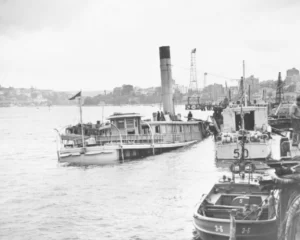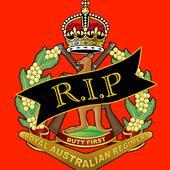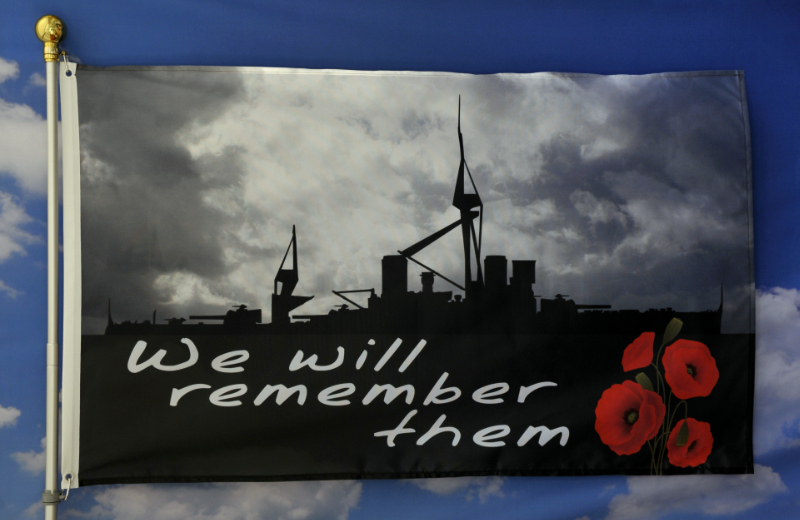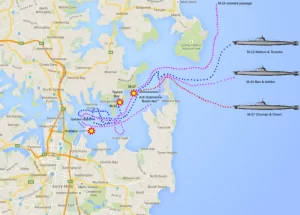Attached please find the funeral notice for Peter Batty from Busselton WA who passed away recently. You are all invited to attend the Busselton RSL, Wednesday 5/6/24 at 1.30pm after the service for drinks.
MEDALS TO BE WORN
Lest We Forget
Sincerely
Wendy M McLean
Secretary
4RAR Association Qld. Inc.
By Amy Johnson – The Strategist
The government risks exacerbating Defence workforce challenges, particularly retention, if it does not adequately engage with the needs of the families of soldiers who will soon be relocating to northern Australia. But if the families are consulted and happily settled, they can bring expertise in key industries such as health and education that the region urgently needs.
As part of the federal government’s new strategic focus on northern Australia announced in September 2023, an additional 500 military personnel will relocate to Townsville from the start of 2025. However, with Defence Families of Australia, the official advisory body representing the interests of Australian Defence Force families, operating in a limited caretaker capacity since August 2023, there are concerns that important perspectives from military families may be overlooked during this relocation process.
Defence families must be considered as key stakeholders in the smooth running of the ADF, as they play an important role in the retention of armed forces personnel. The stereotype of military spouses as ‘silent, self-sacrificing’ partners no longer holds true—‑they increasingly expect their needs to be addressed to help ease the disruptions caused by frequent relocations. Military organisations don’t yet fully accommodate these needs, but the shift north provides an opportunity to change.
Housing is a critical factor in an ADF family’s satisfaction with service life. The property’s location dictates school zoning, affecting educational choices for children. It may also influence a range of lifestyle or financial choices, such as whether the family can own a pet or whether the spouse can run a business from home.
As with many regional centres, housing availability in Townsville is at a premium, with the vacancy rate at 1 percent in the first quarter of 2024 while the number of residential building approvals has declined. The complexity of the challenge has been recognised, and the Department of Defence is in consultation with Defence Housing Australia and the Queensland Government to identify strategies, but detailed solutions are yet to be announced.
In addition to suitable housing, employment opportunities and strong social connections must also be considered in ensuring the wellbeing of Defence families, research suggests.
Defence partners struggle to sustain employment because of the frequent relocations and additional caring responsibilities. Potential employers may be wary of them, too.
The 2019 ADF Families survey found that partner employment was a key concern for families, and almost two-thirds of partners reported that it was difficult or very difficult to reestablish employment following relocation. Although it is encouraging that Townsville’s unemployment rate, at 2.7 percent in October 2023, is one of the lowest in Queensland, there have been reports of employers not viewing Defence partners’ skills and experience as an asset, instead perceiving their mobility as a risk to business continuity.
Defence families will need support in establishing strong social connections or risk being viewed as a drain on resources. The imminent arrival of the soldiers and their families has marked Townsville as the new Army capital, but they need to be welcomed by a community that understands the requirements of service. Any tension with local stakeholders about the impact on housing, healthcare and education and other services need to be resolved.
To ensure that Defence families are happily settled and welcomed in Townsville, it is important to highlight the key contributions they will make to the community. For example, many Defence partners work in health, education or other industries that regional areas need to boost. The north will benefit from the influx of new skilled professionals, and the ADF will benefit from a stable workforce and an improved social licence in the region.
The government’s big shift north requires more than additional Defence personnel to succeed. The families arriving with the soldiers are key stakeholders in this complex relocation, and they must be engaged in the decision-making process.
AUTHOR Amy Johnson is a military-families sociologist at Central Queensland University. Image of a teacher and the children of navy families in an education and childcare trial by the navy at Rockingham, WA, in April: Nina Fogliani/Department of Defence.
Sky News contributor Chris Uhlmann says there is a “real workforce problem” in the Australian Defence Force. “We have a real workforce problem within the ADF,” Mr Uhlmann told Sky News host Peta Credlin. “But, beyond that, we don’t have the kit which we need to fight with.”
The Commander of the Republic of Fiji Military Forces (RFMF) made a visit today to the troops currently participating in the Coral Warrior Series training, conducted in collaboration with the Australian Defence Force (ADF). This joint training aims to enhance the infantry skills of the 3rd Battalion Fiji Infantry Regiment (3FIR), fostering greater cooperation and tactical proficiency.
The Coral Warrior Series represents a critical component of the ongoing defence partnership between Fiji and Australia. It emphasizes the shared commitment of both nations to regional security and military excellence. The training includes a variety of drills and exercises that focus on infantry tactics, including jungle warfare, urban combat, and coordinated assault operations.
Addressing the assembled troops, the Commander RFMF commended the soldiers for their dedication and hard work. He highlighted the importance of such joint training endeavours in building not only technical skills but also camaraderie and mutual understanding between the two forces. “Your participation in the Coral Warrior Series is a demonstration of our commitment to excellence and readiness. The skills you acquire here will be invaluable in ensuring the safety and security of our nation,” he stated.
ADF officers also praised the RFMF soldiers for their professionalism and adaptability during the training exercises. They emphasized the value of these joint operations in enhancing interoperability and building a unified approach to regional security challenges.
As the Coral Warrior Series progresses, both the RFMF and ADF remain committed to continuous improvement and strategic collaboration. The skills enhanced during this training will not only benefit the individual soldiers but also contribute to the broader mission of maintaining peace and stability in the Pacific region.
The Commander RFMF’s visit serves as a morale booster for the troops, reminding them of the significant role they play in the nation’s defence framework. The ongoing collaboration between the RFMF and ADF is expected to yield long-term benefits, strengthening the capabilities of both forces and fostering a resilient and responsive military partnership.
Sad news, Billy Skinner ex – 2 RAR. Vietnam passed away peacefully in his sleep at 4.08 am yesterday. He had been fighting a very aggressive cancer, beat it twice before but on Monday he had a heart attack, was rushed to hospital, they resuscitated him but broke a rib or two in the process, hence putting him in extreme pain. They gave him something to relieve the pain. In the end I think he just wanted to go to sleep. Both his daughters, Karen and Ann were by his side when he gave three deep breaths and he went into eternal peaceful sleep. I got there early morning, as I drove all night from the Gold Coast to the Central Coast NSW. Rest in Peace Bill, love you like the brother I never had.
Bob Meehan
Have you ever read something and thought it sounds too good to be true?
In most cases, if something sounds too good to be true, it probably is, and it might be a scam. Scams can happen to a lot of different people, including veterans and families.
A scam is a type of crime that involves lies, where someone tries to take your money or your personal information. In 2023, a staggering 301,778 scams were reported through Scamwatch, with an almost $477 million estimated cost to victims.
To protect yourself from being scammed, you should never give your personal details to people you do not know or trust. This includes over the phone (voice call or text), by email, on Facebook or in online forms such as registering to prize draws or giveaways.
Some organisations promote free to enter prize draws and giveaways to gain access to your personal information.
If you are unsure if something is a scam, always Stop, Think and Protect.
Remember, if something sounds too good to be true, it might be a scam.
Scamwatch suggests an estimated 30% of scams are not reported. If you are scammed, you can help protect others by reporting the scam. When you report a scam, you’re helping Scamwatch to protect more people from scams.
If you have been scammed, we encourage you to report the scam to Scamwatch.
 Wind turbines, heralded as one of the pillars of sustainable energy, are not without their environmental drawbacks. One significant issue that has recently come to light is the loss of carbon microfibers from the turbine blades over the years due to abrasion at the wing edges. These carbon microfibers, which are tiny fragments of the composite materials used to manufacture the blades, become dislodged through natural wear and tear.
Wind turbines, heralded as one of the pillars of sustainable energy, are not without their environmental drawbacks. One significant issue that has recently come to light is the loss of carbon microfibers from the turbine blades over the years due to abrasion at the wing edges. These carbon microfibers, which are tiny fragments of the composite materials used to manufacture the blades, become dislodged through natural wear and tear.
Environmental Impact of Carbon Microfibers
Soil Contamination
As these carbon microfibers are released, they settle into the surrounding environment, including soils. The accumulation of these fibres can alter soil composition and structure, potentially affecting soil health and the organisms that inhabit it. Microfibers can disrupt the natural processes of soil microorganisms, which play a crucial role in nutrient cycling and plant health. This contamination could lead to a decline in soil fertility over time, impacting agriculture and natural vegetation.
Water Pollution
The microfibers are also likely to be carried by rain and surface runoff into waterways. Once in the water system, they can spread widely, contaminating rivers, lakes, and possibly even reaching the oceans. In aquatic environments, these fibres can be ingested by various organisms, from small plankton to larger fish, leading to bioaccumulation and potentially entering the human food chain. The presence of these fibres in drinking water sources is a significant concern, as their long-term health effects on humans are still not fully understood.
Health Implications
While the specific health risks associated with carbon microfibers are still being studied, there is growing concern about their potential impact. Inhalation of microfibers, similar to other fine particulates, could pose respiratory risks. If these fibres are present in drinking water, ingestion could lead to unknown health consequences. Research is needed to determine if these fibres can pass through biological barriers and accumulate in human tissues, which could lead to chronic health
Conclusion
As we continue to innovate in the field of renewable energy, it’s imperative to consider the full environmental impact of our solutions. Wind turbines provide clean energy but also contribute to environmental and visual pollution in ways that were previously overlooked.
On the night of May 31st and into the early hours of June 1st, 1942, three Imperial Japanese Navy Midget Submarines launched a daring attack on Sydney Harbour. This event, sometimes referred to as the “Battle of Sydney,” marked a significant moment in Australia’s involvement in World War II.
The audacious attack was meticulously planned and preceded by several reconnaissance flights over Sydney, which gathered valuable intelligence. The primary targets within the harbor were the Allied warships, including the HMAS Canberra and the USS Chicago.
The first of the three midget submarines to penetrate Sydney Harbour was M-27, commanded by Lieutenant Kenshi Chuman and Petty Officer Takeshi Omori. Entering around 8 pm, M-27 soon encountered trouble as its propellers became entangled in anti-submarine nets near the western boom gate. The disturbance was quickly noticed and reported, leading to the deployment of patrol boats HMAS Yarroma and HMAS Lolita. However, by the time these patrol boats arrived, the crew of M-27 had detonated demolition charges, destroying their vessel at 10:37 pm.
 The second submarine, M-24, entered the harbor at 9:48 pm, manned by Sub-Lieutenant Katsuhisa Ban and Petty Officer Mamoru Ashibe. Despite being sighted by the USS Chicago, M-24 was not successfully repelled by the defensive gunfire. Approximately half an hour after being spotted, M-24 fired two torpedoes at the Chicago. Both torpedoes missed their intended target; one ran ashore at Garden Island, while the other struck the sea wall near the Sydney Harbour ferry Kuttabul, which was serving as a Royal Australian Navy depot ship. The explosion caused the Kuttabul to sink, resulting in the tragic loss of 21 Allied naval ratings and leaving others injured or trapped. M-24 and its crew managed to exit the harbor, but their fate remained a mystery until 2006 when the wreck was discovered off Sydney’s northern beaches.
The second submarine, M-24, entered the harbor at 9:48 pm, manned by Sub-Lieutenant Katsuhisa Ban and Petty Officer Mamoru Ashibe. Despite being sighted by the USS Chicago, M-24 was not successfully repelled by the defensive gunfire. Approximately half an hour after being spotted, M-24 fired two torpedoes at the Chicago. Both torpedoes missed their intended target; one ran ashore at Garden Island, while the other struck the sea wall near the Sydney Harbour ferry Kuttabul, which was serving as a Royal Australian Navy depot ship. The explosion caused the Kuttabul to sink, resulting in the tragic loss of 21 Allied naval ratings and leaving others injured or trapped. M-24 and its crew managed to exit the harbor, but their fate remained a mystery until 2006 when the wreck was discovered off Sydney’s northern beaches.
The third and final midget submarine, M-22, entered the harbor in the early hours of June 1st. Crewed by Lieutenant Kieu Matsuo and Petty Officer 1st Class Masao Tsuzuku, M-22 was detected in Taylors Bay. The patrol boats launched repeated depth charge attacks, severely crippling the vessel. The following day, the two-man crew was found dead inside M-22, having taken their own lives.
The unexpected and bold attack by the three midget submarines served as a stark wake-up call to many Sydneysiders, who had previously viewed the war as a distant conflict. This incident marked a turning point, reshaping perceptions of Australia’s role in the war and highlighting its strategic importance as a springboard for Allied operations against Japan in the Pacific. The loss of 21 Allied lives, along with the deaths of the four Japanese submariners, underscored the harsh realities of war.
The 19 Australians and 2 British ratings who perished were honoured with a burial service with full naval honours. The four Japanese submariners were also accorded a funeral with naval honours at Rookwood Cemetery, a gesture that was appreciated by Japan in the years that followed. Two months later, their cremated remains were repatriated to Japan in a diplomatic exchange.
The remnants of the two recovered midget submarines were combined to create a composite vessel, now displayed at the Australian War Memorial in Canberra. This exhibit, which includes the wheelhouse from the Kuttabul, serves as a poignant reminder of the events of that night.
This year marks the 82nd anniversary of the attack on Sydney Harbour. As we reflect on this historical moment, we honour and remember those who defended Australia on the night of May 31st and into June 1st, 1942, recognizing their bravery and the profound impact of World War II on our nation.
Photo: Ferry Kuttabul lying on the seabed following M-24’s torpedo attack. Source: www.navy.gov.au
In May, soldiers from the 1st Regiment, Royal Australian Artillery (1 RAA) participated in an intensive live-fire training exercise at Shoalwater Bay Training Area. The training included “danger close” serials as part of a combined arms activity, enhancing the soldiers’ ability to defend their gun positions with both heavy weapons and small arms.
The exercise involved direct and indirect artillery fire, with one battery firing dangerously close to within 360 meters of the defending troops. This scenario tested the soldiers’ readiness and precision under pressure.
Lieutenant Colonel Khalid El-Khaligi, Commanding Officer of 1st Regiment, highlighted the significant benefits of the exercise. “This is our advanced live-fire training for both small arms and gunnery,” he stated. “It’s a surreal experience for the soldiers to have another battery firing danger close to defend another gun line. This opportunity sets a high watermark for our training.”
The chance to fire live rounds and test multiple skill sets was particularly exciting for the soldiers. Bombardier Luke Del Borrello noted the heightened focus and attention to detail brought on by the live-fire setting. “We’ve conducted similar training with blank fire before, but for most of us, this is the first time doing it live,” he explained. “Having danger close dropped near us pushes our readiness and training to new heights.”
Using live rounds required the soldiers to be exceptionally vigilant with their weapons drills and muzzle awareness. “You’re always conscious of these factors, but the use of live rounds intensifies that awareness to another level,” Del Borrello added.
This advanced live-fire training exercise has undoubtedly elevated the skill and preparedness of the 1 RAA soldiers, providing invaluable experience in a high-stakes environment.











